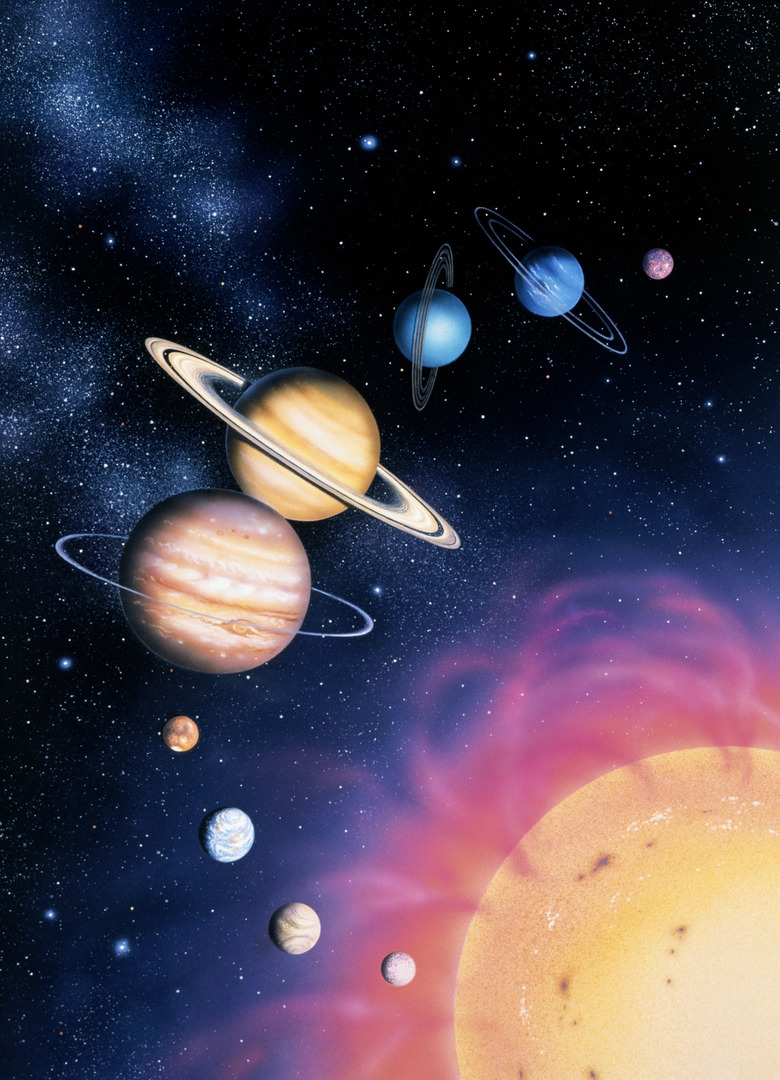Eccentricity Of Planet Mars' Orbit
Eccentricity could help people walk on the Red Planet one day. Mars, one of Earth's closest planetary neighbors, has one of the highest orbital eccentricities of all the planets. An eccentric orbit is one that looks more like an ellipse than a circle. Because Mars travels in an ellipse around the sun, there are times when it's close to Earth and times when it's farther away. Astronauts wishing to travel to Mars can get there quickly by choosing an arrival time when Mars is closest to Earth.
Eccentricity: The Math
Eccentricity: The Math
When reading about planets, you may see an eccentricity value such as 0.0034. That number tells you how much a planet's orbit deviates from being perfect circle. If the value is 1, an orbit would not exist because the planet would move in a parabolic path and never return to the solar system. Values between 0 and 1 define orbits that are elliptical. The larger a value gets, the more elliptical an orbit becomes. Mars' orbital eccentricity value is 0.093.
Summer, Winter and Orbital Eccentricity
Summer, Winter and Orbital Eccentricity
Mars' relatively high orbital eccentricity, along with its axial tilt, causes the planet to experience more dramatic seasonal changes than you find on Earth. This happens because as Mars circles the sun, its distance varies between 1.35 astronomical unit at its closest point to 1.64 astronomical unit at its farthest. An astronomical unit is the average distance between the sun and Earth. That distance is 149.6 million kilometers (92,584,307 miles).
Eccentricity and Pressure Changes
Eccentricity and Pressure Changes
Mars experiences a dramatic change in atmospheric pressure partly because of its eccentric orbit. When winter arrives, the planet's atmospheric pressure drops 25 percent lower than the pressure it has during the summer. The planet's seasons, which change about every seven months, can also vary much more than Earth's seasons. This occurs because Mars slows down when it gets farther from the sun, and it speeds up at its closest point to the sun.
Planetary Eccentricity Comparisons
Planetary Eccentricity Comparisons
Pluto, now classified as a dwarf planet, has a higher orbital eccentricity value than Mars: 0.244. Even at its closest point, however, it's still billions of miles from the sun. Earth, on the other hand, has a low orbital eccentricity value of 0.017. Venus, with an eccentricity of 0.007 and Neptune, with an eccentricity of 0.011, also have fairly circular orbits around the sun.
Cite This Article
MLA
Lee, Kevin. "Eccentricity Of Planet Mars' Orbit" sciencing.com, https://www.sciencing.com/eccentricity-planet-mars-orbit-21768/. 24 April 2017.
APA
Lee, Kevin. (2017, April 24). Eccentricity Of Planet Mars' Orbit. sciencing.com. Retrieved from https://www.sciencing.com/eccentricity-planet-mars-orbit-21768/
Chicago
Lee, Kevin. Eccentricity Of Planet Mars' Orbit last modified March 24, 2022. https://www.sciencing.com/eccentricity-planet-mars-orbit-21768/
